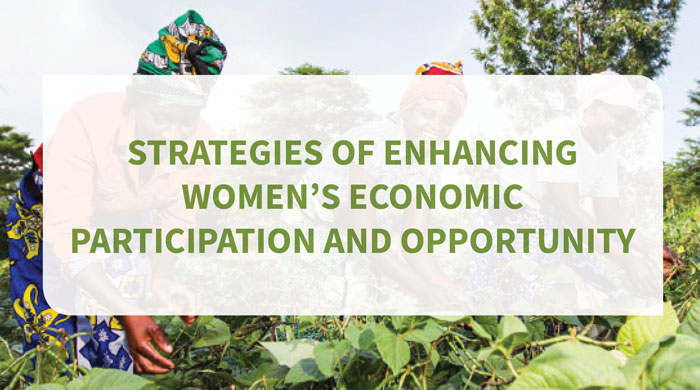Several effective strategies for reducing the barriers to women’s economic participation have emerged over the years. It should be stressed that the experience gained so far is inevitably country-specific. However, studies have shown that there is particularly strong evidence of what works in five areas which include; education, health, wage labour, agriculture and natural resource management, and financial services.
- Education
Improving women’s access to education requires the development of strategies aimed at expanding girls’ enrolment. The Zambian Government has made efforts of improving girl child enrolments which include Re-entry policy and reserving places for female students, for example, the University of Zambia reserves a percentage for female students whereas the rest remains competitive between male and female students. Other strategies could involve the reduction of direct and indirect costs of education to persuade parents to send their daughters to school and scholarships for girls among others
The opportunity cost for girls’ education that arises from the heavy burden of household chores can be addressed by reducing their work through the establishment of daycare and early childhood centers for their younger siblings, improving the supply of accessible water and fuel as well as providing flexible hours to allow girls to complete home chores before or after school which is being implemented in various countries such as Bangladesh, China, India, Morocco, and Pakistan.
- Health
The Seventh National Development Plan highlights recognises the importance that health plays in enhancing human development. In this regard, the Government intends to invest in primary health care by strengthening fundamental components of the health system. Primary health care will be the pillar of the health system and will be central to preventing epidemics; improving women’s and children’s health; controlling major infectious diseases, such as malaria, tuberculosis, and HIV and AIDS; and managing the rising burden of non-communicable diseases, such as diabetes, cardiac disease, and cancer. Other strategies that can be adopted with regards to improving women’s access to health is through the provision of community-based health services. Community-based health services have been cost-effective in improving women’s health. The Ministry of Health has made efforts with regards to improving women’s access to health facilities through the establishment of health posts across the country as well as upgrading of clinics into Level One Hospitals. The Ministry has also facilitated the training of community health workers who go around communities sensitizing on good health practices as well as family planning among others.
Community-based health services with Integrated services that combine nutrition, family planning, safe sex, maternal and child health services, and primary health care- tend to be the most effective in reaching out to women. Women’s access to health can also be improved by increasing funding towards the health sector in line with international protocols such as the Abuja Declaration of 2001, which states that health must be allocated 15% of the national budget.
- Wage labour
The principal strategies for increasing women’s participation in the formal labour force include; removing legal and regulatory barriers, raising women’s productivity, easing the constraints on their time, and improving the efficiency of the labour market by providing information on job opportunities. Legal reform, education and training, improved access to information, and affordable childcare are the keys to enhancing women’s participation in formal labour markets.
- Agriculture and natural resource management
Given that most poor rural women work in the agriculture sector, the main strategy is to help women obtain title to the land and to open the doors to financial services as well as Government assistance. Women also should be enabled to exercise the full range of land rights to sell or mortgage the land and to get the full benefit from crop sales.
Environmental degradation increases women’s burden, as they have to trek long distances to fetch firewood and water. The direct and indirect costs of environmental damage for women need to be assessed and included in natural resource management projects and policies. Women’s participation in decisions on issues relating to environmental policies is critical for setting appropriate priorities. Women can participate more effectively if they are trained in the analysis of the causes and consequences of environmental problems.
- Financial Services
High transaction costs, high perceived risks of default, a lack of collateral, and social resistance commonly bar women’s access to credit. One way to reduce transaction costs is group lending, in which members accept joint liability for loans. This relieves the lender of the costly process of checking the creditworthiness of individual borrowers and lowers the administrative costs per loan, which is particularly important if the average loan is very small. Group lending also lowers the risk of default. The combination of peer pressure and cooperative gains from participation in a group has proved to be an effective motivator for repayment in many different countries and settings worldwide. Lack of collateral is a pervasive problem for the poor, and particularly for poor women, who rarely have title to significant assets. joint-liability groups replace collateral with a collective guarantee in many programs. World Bank, 1994.




